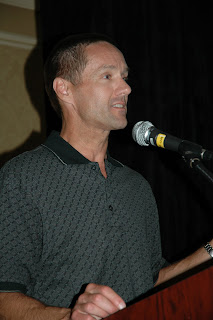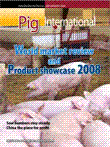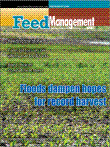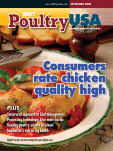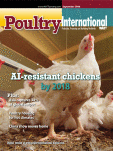Is a proposed compromise on ethanol mandates a win for both poultry and grain producers?
The shouting match between corn producers and livestock producers over U.S. biofuels policy was lowered a decibel or two June 19 when a poultry industry economist and the CEO of the National Corn Growers Association discussed a compromise proposal for a limit on corn use for ethanol and a switch to a variable federal subsidy on ethanol.
With one-third of the nation’s corn crop now going to ethanol production and the government mandated portion still headed upward, poultry and livestock producers are concerned about future corn prices.
During the USA Poultry & Egg Export Council (USAPEEC) Executive Conference & Annual meeting in Key Biscayne, Fla., poultry industry consultant Dr. Paul Aho offered what is being referred to as the Key Biscayne Compromise:
Limit corn use for ethanol to 15 billion gallons
No corn diversion to meet mandates for cellulosic ethanol
Variable blend credit and tariff
15% ethanol-gasoline blends
National Corn Growers Association CEO Rick Tolman, who joined Dr. Aho on the podium as a speaker, called some of the ideas in the proposal “interesting” before a crowd of U.S poultry exporters.
“I like the [proposal for a] variable subsidy,” Tolman said.
In making his proposal, Aho said, “The Key Biscayne Compromise would be to limit the mandated corn use to 15 billion gallons as is laid out in the law today. We’re up to 12 billion gallons next year so 15 billion gallons is not that much further. But let’s limit the mandated use to 15 billion gallons just like the law says, but not use corn if the cellulosic ethanol doesn’t pan out.”
Aho said the variable blend credit in tariff should follow proposals previously made by Dr. Wallace Tyner at Purdue University.
His proposal point on cellulosic ethanol arises from poultry and livestock producers’ concern that additional corn might be diverted to satisfy mandates for the production of ethanol from cellulosic stock. Sixteen billion gallons of ethanol from cellulosic stock are mandated by 2022, but no commercially feasible technology exists to meet the mandate.
Aho also proposed that 15 percent ethanol blends be allowed. “There’s no problem with 15 percent blends if the total mandated use is limited to 15 billion gallons and a variable blend credit is used,” he said.
During a speech that preceded Aho’s compromise proposal, Tolman said corn growers are increasingly productive with U.S. 2007 corn yields at 151.1 bushels per acre. As a result, corn growers are concerned about having markets in place for that production.
Aho responded to the concern by saying that containing high corn prices and reducing price volatility would result in more corn usage in poultry and livestock feeds.
“The important thing is that if we can keep that mandated corn-based ethanol use to 15 billion gallons there may be chance for a compromise here between the users and the producers of corn,” he said.
Speaking before the crowd of exporters, Tolman said the proposal was “interesting,” if the poultry and livestock industries would end up using more corn for chickens, hogs and cattle.
Dr. Aho invited Mr. Tolman to shake hands as a sign of willingness to consider the idea of compromise between users and producers of grain. The two shook hands on stage, though Tolman told the crowd that he does not represent the ethanol industry and cannot represent the corn industry on matters of policy unilaterally.
Following publication of the photo of the handshake, Tolman made it clear through a National Corn Producers Association spokesperson that the handshake “was made out of a desire to work together, not to seal any sort of contract or agreement.”
Mr. Tolman, the spokesperson said, expressed interest at the meeting in further study regarding one or more separate parts of a proposed compromise, such as a variable VEETC (volumetric ethanol excise tax credit).
He emphasized that no compromise agreement was made by Mr. Tolman regarding the future of corn ethanol. Updated June 23: Includes additional clarifying paragraphs. Shown in photo: Dr. Paul Aho, Poultry Perspective, and Rick Tolman, CEO of the National Corn Growers Association.





























